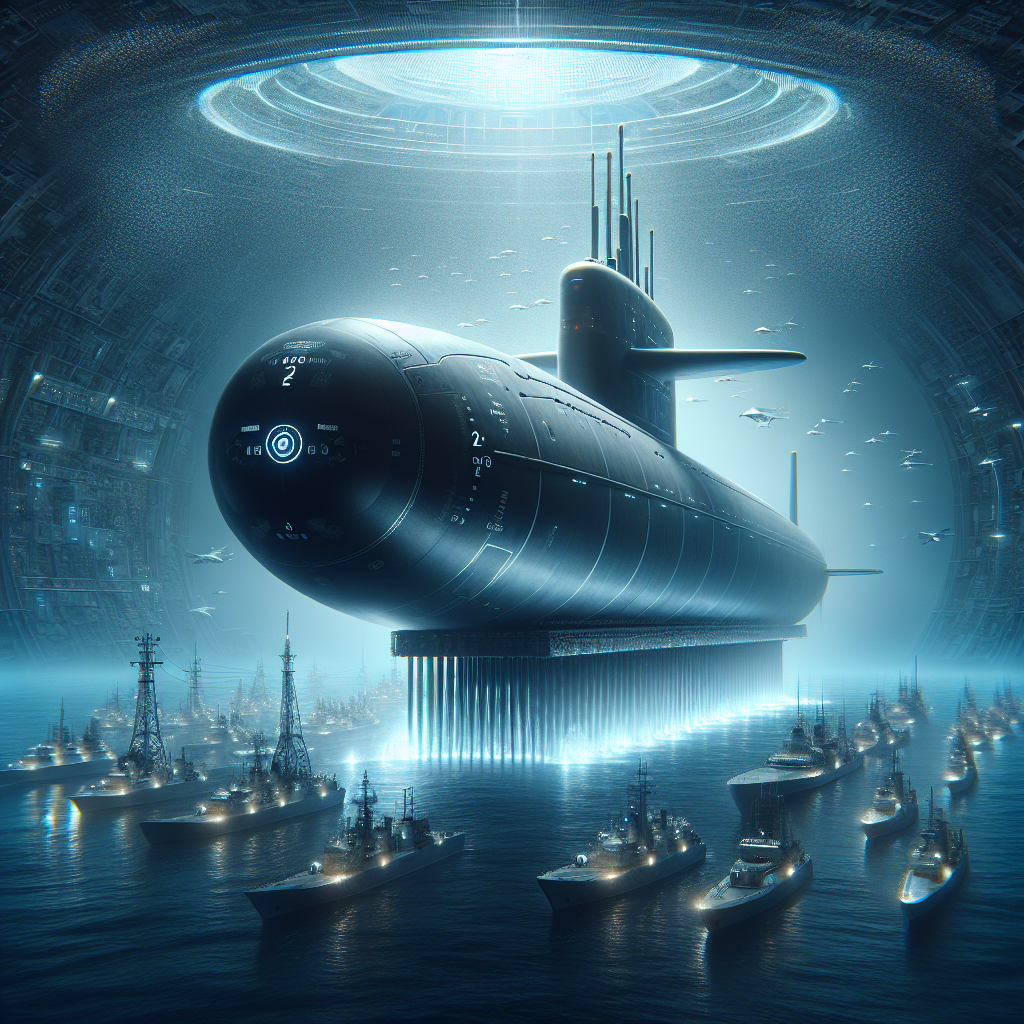North Korea’s Nuclear-Powered Submarine: A Game-Changing Threat?
Introduction
In the ever-evolving landscape of global security, North Korea’s recent unveiling of a nuclear-powered submarine has sent shockwaves across the international community. This unprecedented revelation marks a significant escalation in North Korea’s military ambitions and poses a formidable challenge for regional and global security alliances, particularly South Korea and the United States. In this blog, we’ll examine the implications of this development, why it matters to the world, and how it shapes the future of geopolitics.
Breaking Down the Announcement: What We Know So Far
North Korea’s nuclear advancements aren’t new, but showcasing a nuclear-powered submarine takes the stakes to an entirely new level of military sophistication and threat. Here’s what’s known based on the announcement:
The Submarine's Key Features
While full technical specifications of the submarine remain shrouded in secrecy, reports suggest it incorporates technology capable of enabling extended underwater operations. This allows North Korea to better evade detection systems from opponents like the United States and South Korea. Additionally, as a nuclear-powered vessel, it likely has the capacity to launch nuclear-tipped ballistic missiles, introducing a grave and hard-to-track threat.
Timing is Everything
The timing of this revelation is also noteworthy. Coming at a period when tensions across the Korean Peninsula are already high—with regular missile launches and heightened military activities—this announcement seems to be a deliberate move to showcase power and influence. It’s not just a defense strategy; it’s a signal of North Korea's intention to be seen as a legitimate nuclear superpower.
Implications for Regional and Global Security
A Major Escalation in North Korea's Defense Strategy
For decades, the Korean peninsula has been a powder keg of tensions, only kept in check by a delicate combination of diplomacy and military preparedness. Now, the introduction of a nuclear-powered submarine fundamentally changes those dynamics.
South Korea and Japan, in particular, are facing increased security threats due to North Korea’s submarine. For South Korea, this is more than a military concern; it affects their international trade routes and ability to maintain consistent economic stability. Japan, meanwhile, finds its pacifist constitution tested as it considers potential preemptive measures.
Impact on the US
For the United States, which has pledged to protect South Korea under a longstanding military agreement, this development is a stress test for its regional alliances. With China’s rise as a formidable power, North Korea’s growing military capabilities place additional strain on the US defense policy in Asia.
Furthermore, the submarine’s introduction underscores North Korea’s resolve and technological skill, potentially undermining US credibility in deterring Pyongyang’s ambitions.
The Broader Fallout
North Korea’s actions could have a ripple effect globally, emboldening other nations to pursue nuclear enhancements of their own. Countries such as Iran and Pakistan may interpret this as evidence of the benefits of muscular defense postures rather than diplomatic compromise.
International Responses So Far
South Korea and Japan
Unsurprisingly, South Korea and Japan have strongly condemned the development and are considering increased military cooperation with the United States as a counterbalance. Joint naval exercises and deployment of high-tech tracking systems are likely outcomes.
United States
The US State Department has responded cautiously but firmly, condemning North Korea’s actions while emphasizing defense commitments to its allies. However, the lack of immediate, concrete action raises questions about America's capacity to preemptively address this growing threat.
China and Russia
China and Russia—both often seen as tacit supporters of North Korea—have criticized the US and its allies for what they claim are “provocative military drills” in the region. While they have yet to directly address the submarine’s unveiling, their indirect support for Pyongyang only complicates an already tense situation.
What Happens Next?
The key question is not just about the submarine itself but the political landscape it alters. How do governments prevent a nuclear arms race in East Asia? Can diplomacy still play a role in curbing North Korea’s aggression? These unresolved questions must be addressed sooner rather than later.
Leaders around the world must recognize the urgency of creating multilateral agreements aimed at nuclear containment. Without such strategies, the world inches closer to a potential crisis.
Conclusion
North Korea’s unveiling of a nuclear-powered submarine is not merely a defense upgrade—it’s a game-changer in the global geopolitical balance. Its implications ripple across borders, from the Korean peninsula to Washington, D.C., and beyond.
While the road to de-escalation seems increasingly fraught, one thing is clear: complacency is not an option. Policymakers and global leaders must rise to the occasion, addressing these challenges with unity, resolve, and a renewed commitment to peace.
The submarine may look like just another piece on the chessboard, but it’s a move with implications far beyond the region. The game has changed—and the world is watching.
Frequently Asked Questions (FAQ)
1. Why is North Korea unveiling a nuclear submarine now?
The unveiling is likely timed to maximize its geopolitical impact, showcasing advancements in military technology and signaling defiance during a period of heightened regional tensions.
2. How does this affect South Korea and Japan?
The submarine complicates security scenarios for both nations, as it introduces a stealthy and nuclear-capable threat that is harder to monitor and intercept.
3. What can the US do to respond?
The US can enhance joint military operations with allies, increase surveillance, and explore diplomatic solutions while maintaining strict sanctions on North Korea.
4. Is this submarine operational yet?
As of now, it appears the submarine is under construction and still undergoing tests. However, its introduction signals North Korea's future intent.
5. Can diplomacy still work with North Korea?
While challenging, multilateral negotiations with support from China and Russia may offer a path forward. The urgency, however, lies in achieving tangible agreements.
Related Tags
#NorthKorea #NuclearSubmarine #GlobalSecurity #RegionalTensions #USForeignPolicy #SouthKorea #Geopolitics
Final Word: This is a moment for the world to come together, understanding that peace requires action and cooperation at every level.
